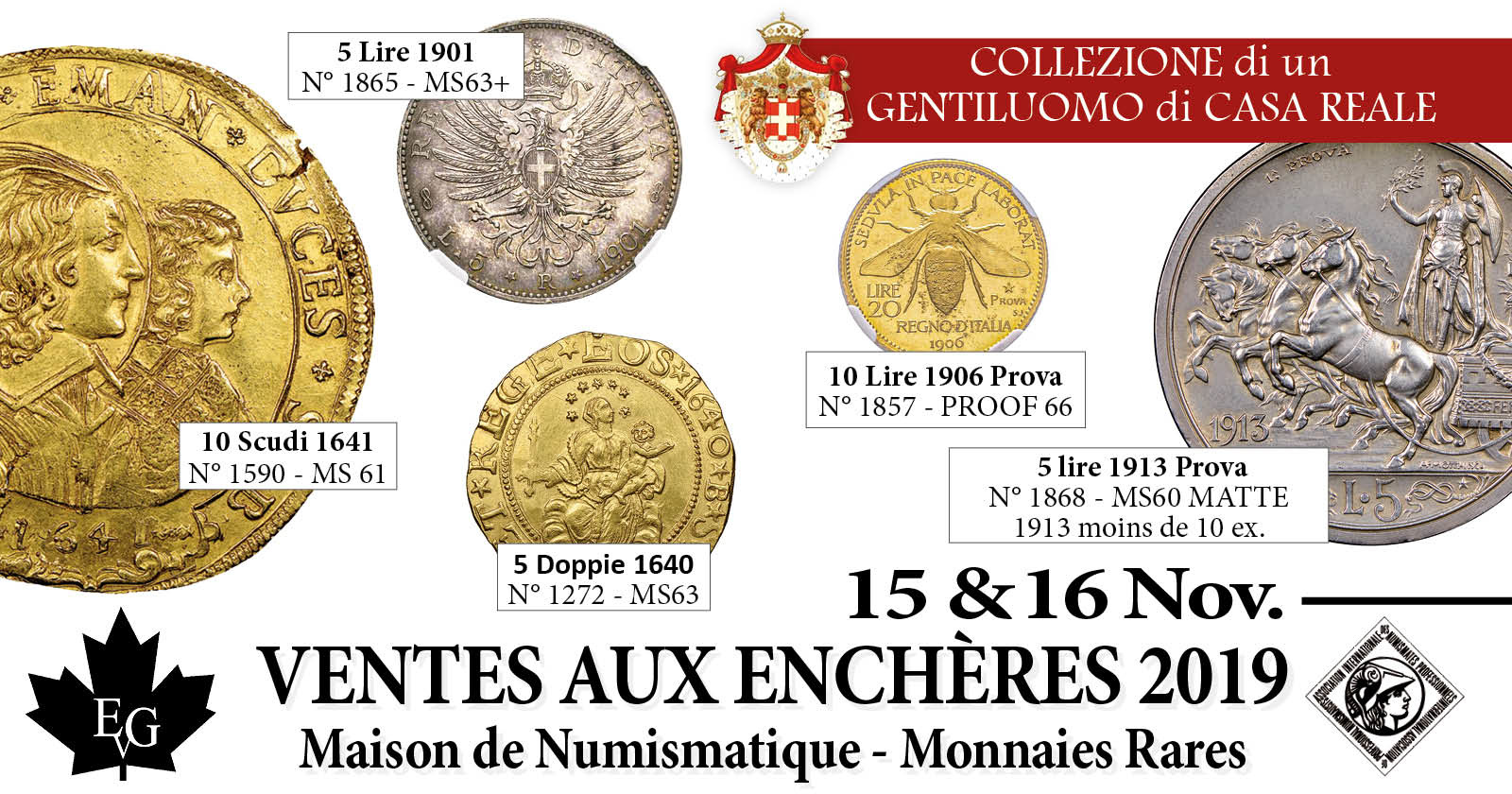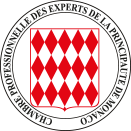News
The Gadoury Auction 2019 - Ancient Coins

On 15 and 16 November 2019, the Gadoury auction offers something for every collector – at the highest level:
From the finest ancient coins to coins from all over the world and to the second part of the spectacular collection of a gentleman from the House of Savoy.
In 2018, auction house Gadoury was pleased to hold the largest auction in its history. Particularly the spectacular collection of Casa Savoia coins – owned by a gentleman from the House of Savoy and comprising 350 lots – attracted numerous collectors to come to sunny Monaco. This led to top results.
No. 1505 – Charles Emmanuel I, 1580-1630. 10 scudi d’oro, type II, Turin, 1610. Only three specimens are known! NGC MS60. Estimate: 200,000 euros. Hammer price: 250,000 euros.
A brief review of the first part of the Casa Savoia collection
Let us recall three results of the impressive auction: The price of an early ducat d’oro of Charles I (1482-1490) climbed from 50,000 to 90,000 euros, a 10 scudi d’oro piece of Charles Emmanuel I from 1610 – only three specimens are known of this piece – was sold at a quarter of a million euros (estimate: 200,000 euros) and a 100 lire trial piece minted in 1910 in Rome with an estimate of 150,000 euros got almost the same result: 220,000 euros.
Save 15 and 16 November 2019!
If you think now that it is impossible to surpass those results, this year’s Gadoury auction will prove you wrong. It contains a wide range of rarities from all periods – from the antiquity to the present. And, once again, the collection of a gentleman from the House of Savoy stands out: This time, part 2 will be auctioned.
The Gadoury auction will take place on 15 and 16 November 2019 at Le Méridien Beach Plaza Hotel. There are several good reasons to participate in this auction in person: The weather in Monaco is beautiful – also in November – and the well-attended Monaco coin fair takes place immediately after the auction on 17 November 2019.
Those who collect Greek coins should take a close look at the auction catalogue. It contains rarities of gorgeous quality and extraordinary provenance.
A fine example is a very rare quarter stater of the Acarnanian Confederation, minted around 250 BC in Leucas: In order to be better protected against their aggressive Aetolian neighbours, the cities of Acarnania formed a union with the capital Leucas. A quarter stater from the very beginning of this league is a rare testimony to the Hellenistic period and a marvellous example of an extremely fine Hellenistic engraving in the smallest format.
By the way, the auction also offers a large choice for collectors of Celtic coins, mainly from the French area.
No. 297 - Greek Coins / Mauritania. Ptolemy, 20-40 AD. Quinarius, Caesarea (= Cherchell / Algeria). Unpublished and unique. Extremely fine. Estimate: 30,000 euros.
The spectacular highlight of the section of Greek coins is an unpublished gold quinarius of huge historical importance. The coin depicts Ptolemy, the last king of Mauritania, grandson of Cleopatra and Mark Antony. After the conquest of Egypt, Augustus had married their daughter, Cleopatra Selene, to Juba II, King of Mauritania. Their son Ptolemy was raised in Rome, in the household of Antonia Minor. With the permission of Rome, he took over the rule of Mauritania after the death of his father. Because of a loss-making victory over the Berber tribes that had attacked Mauritania, he was even honoured with the title “friend and ally of the Romans”. However, this did not hinder emperor Caligula from having him murdered in Rome during an official visit.
The coin with an estimate of 30,000 euros matches the coinage of Ptolemy that is known so far perfectly: Its inscription and depiction is based on Roman models.
Romans, Byzantines, Lombards
As a representative example for all these rare pieces you can see here a solidus of the usurper Decentius, who – as co-emperor of his brother Magnentius – tried in vain to secure the Rhine frontier.
No. 516 - Byzantium. Justin I and Justinian I, 527. Hybrid solidus, 527. Unique. Extremely fine. Estimate: 10,000 euros.
Only a few – but exceptional – Byzantine coins will be auctioned. An example is this unique hybrid coin struck in 527 whose obverse features Justin I and Justinian I.
No. 575 - Migration Period. Lombards. Desiderius, 757-774. Tremissis, Castelnovate. Extremely rare. Extremely fine / FDC. Estimate: 10,000 euros.
In 2019, the Gadoury auction also offers a large choice of coins from the Migration Period, especially pieces of the Lombards. The outstanding piece is a tremissis of Desiderius (757-774), their last king. His daughter was married to Charlemagne. After the latter had repudiated her, her father’s court developed into a centre of resistance to the Carolingians. Desiderius tried to force the Pope militarily to join his alliance against the Carolingians. Charlemagne stepped in, invaded Italy and conquered the Lombard Kingdom. The tremissis of the last king of the Lombards offered at the Gadoury auction was struck in Castelnovate, a town in the Italian part of the Ticino.




 English
English French
French Italian
Italian